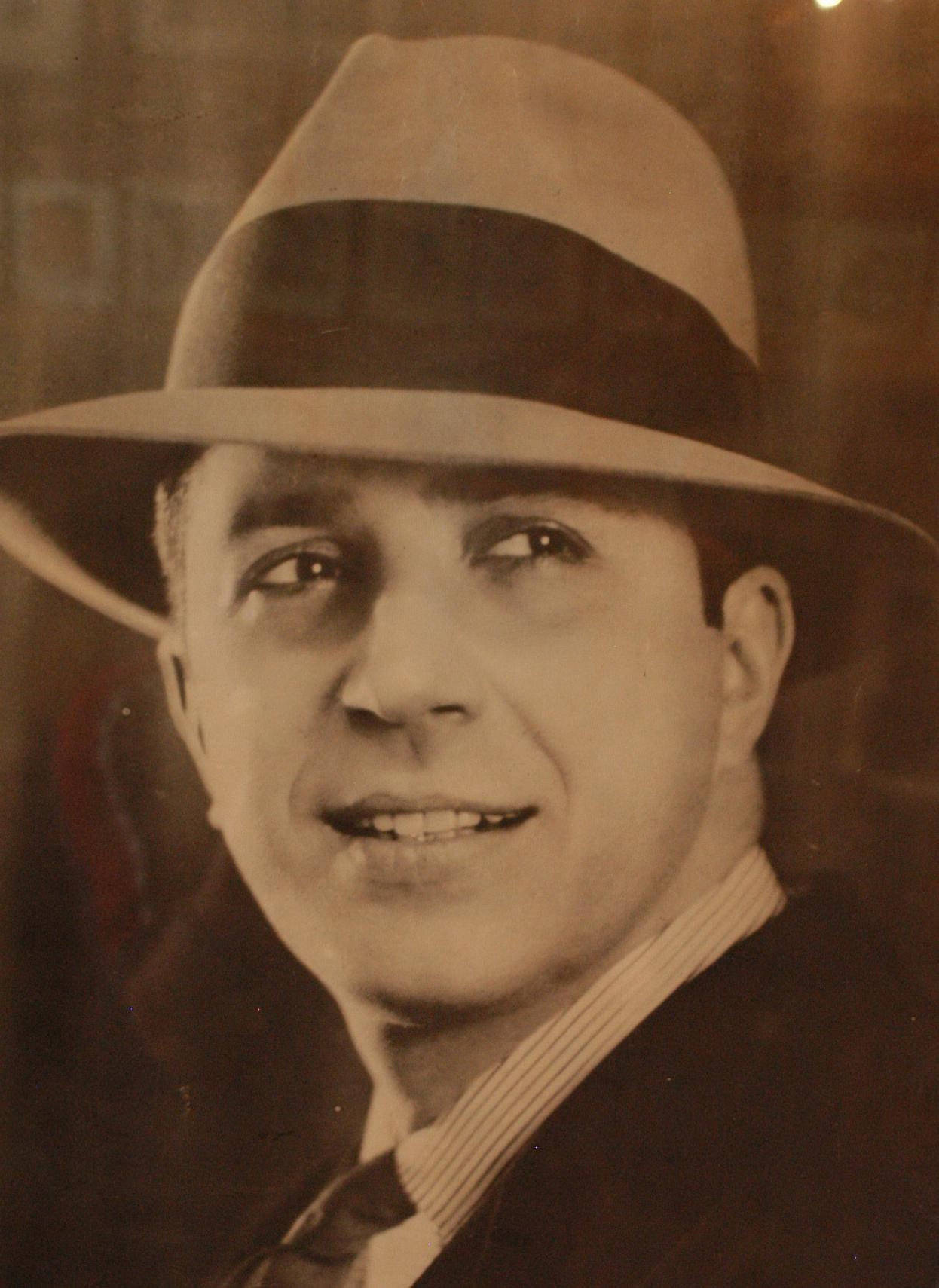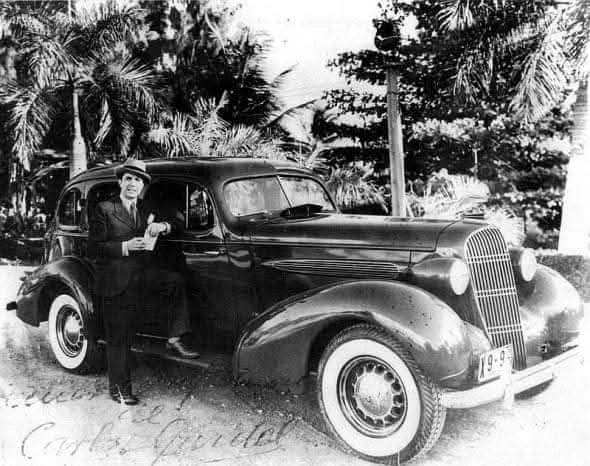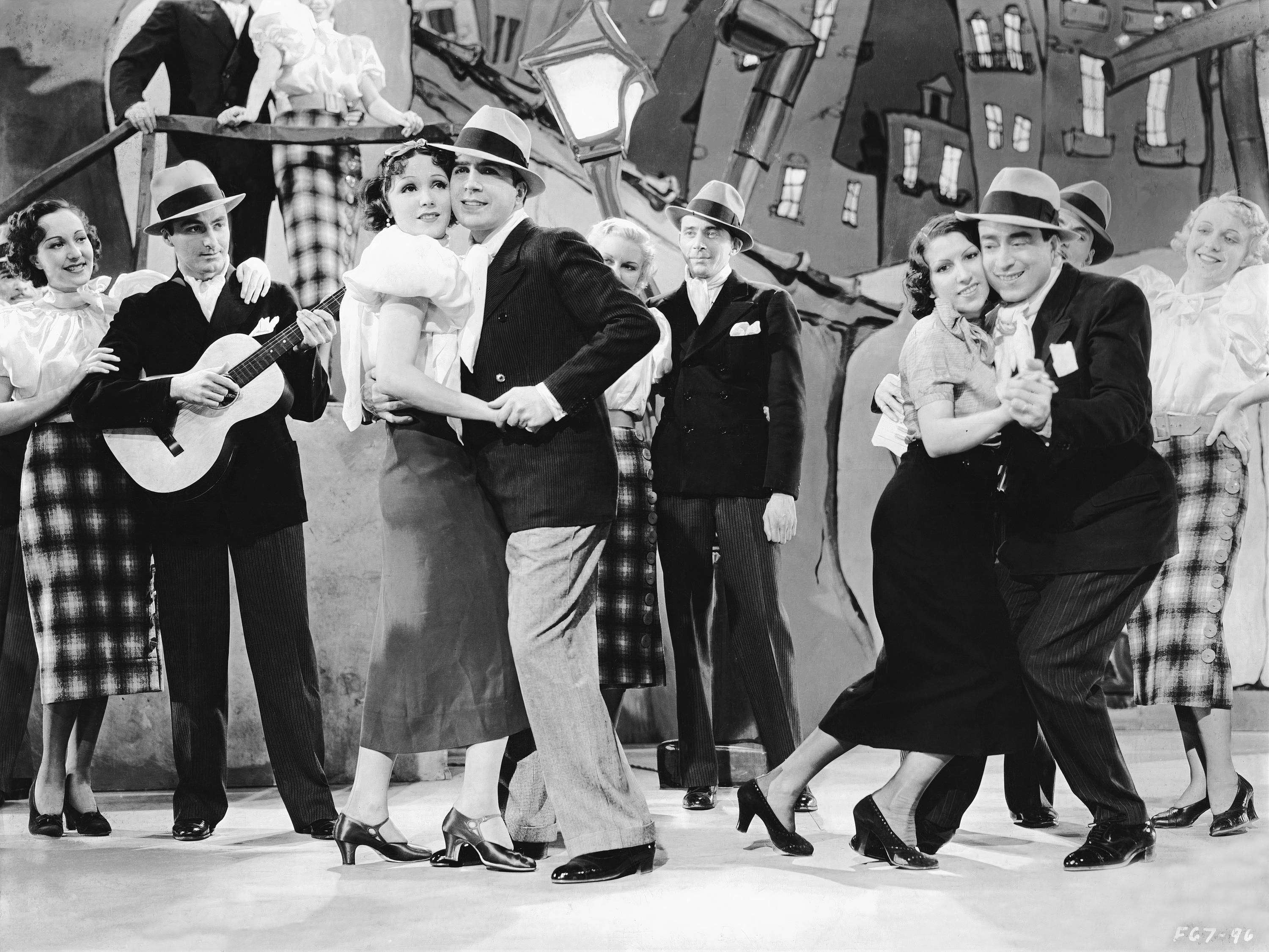Carlos Gardel's tour of Colombia included Barranquilla, Cartagena, Medellín, and Bogotá before his tragic end.

On January 31, 1935, Carlos Gardel did not hide his satisfaction at the arrival – finally – of his guitarists Aguilar, Barbieri and Riverol to the docks of the port of New York from Buenos Aires, who had responded to his call to accompany him on his tour of the Antilles, Venezuela and Colombia, on which he had high hopes; and where he was known for his records and films: “The guitarists arrived and the poor things had to spend (…) 48 hours interned on an island (Eliis) (…) in order to get them out I had to deposit $1,500 as a guarantee,” he informed Armando Defino, his manager in the Argentine capital.
Around that time, he was filming The Day You Love Me at Astoria Studios in Queens , the first of two films for which he was hired by Paramount Pictures under advantageous conditions: “As you know, no artist is given a percentage, and even Hollywood stars like Greta Garbo never get more than 8 or 10 percent. I got 20 percent ,” he told Defino, and he also received a payment of $22,000 (equivalent to $487,000 today).
His partner and friend, the Brazilian Alfredo Le Pera, participated in the script and the songs, and the Argentine Terig Tucci in the musical arrangements , who was also the architect of the successful albums he recorded with his orchestra, simultaneously with RCA Victor, with a remuneration of 900 dollars (22,000 dollars today) for each one of them, not counting royalties: “The next one will be finished in March. I will immediately leave for a tour of Central America, which will end at the end of June , and I will go to France to see my dear mommy and give her lots of kisses,” he wrote to Doña Berta, his mother, on February 13, 1935.

Carlos Gardel was a singer, composer, and film actor. Photo: EL TIEMPO Archive
In two weeks , Tango Bar, considered his best film, was shot, in which he sang the tangos Por una cabeza and Arrabal amargo. On March 19 and 20, just eight days before his departure, he resumed his appearances on NBC radio, where he had long since introduced tango to this great city, which already boasted more than 500,000 Spanish speakers.
That same March 20th he returned at night to the RCA Victor studios to record the remaining thirteen songs, which were the last ones he recorded: “Gardel spent the day before his departure, ” Tucci said, “writing to his manager and friend Armando Defino, giving him instructions regarding pending business, collections, and other matters .” Defino had replaced José Razzano, his previous duetist and manager, and the latter was dedicated to straightening out his battered finances with investments in highly profitable businesses.
At 44 years of age, few artists could boast so many achievements like Gardel: six outstanding films made in Paris and New York in less than four years, and a record production that reached the astronomical figure of 1,026 songs (according to the sum of researcher José Antonio Cárcamo) with which he flooded the world, with the Caribbean and part of South America still to be conquered.
On Thursday, March 28, 1935, Gardel set sail on the steamer Coamo for Puerto Rico, accompanied by Le Pera, the guitarists José Plaja, his secretary, and José Corpas, who served as his valet.
On board, he chatted a lot with the other passengers: “ the vast majority (…) were ladies from Puerto Rican society (…) happy to travel in his company,” added Le Pera, quoted by composer Mario Battistella.

Carlos Gardel was on the SACO plane Photo: X: @cultura_tango
However, deep inside he harbored a great concern: some presentations in Colombia, due to its rugged geography, had to be carried out by air and Gardel was terrified of airplanes , which even led him to swear to his mother that he would never get on one of these devices.
In the early hours of April 1, Gardel arrived in San Juan, Puerto Rico, where thousands of people awaited him. He debuted at the Paramount Theater, to a packed house, with 3,000 fans left out, forcing him to extend his stay for another twenty-three days, with performances throughout the rest of the island: "I want to be," he said, "available to everyone." There, Puerto Rican Alfonso Azzaf joined the group as a public relations officer.
It continued to Caracas, with a stopover in La Guaira, where they arrived on April 25: "The result was dramatic," Le Pera recalled, "people were injured and there was a commotion that made us fear for our safety." From May 26 to 10, it performed at the Principal and Rialto theaters, to sold-out crowds, and then went on to Maracay, Valencia, and Maracaibo.
They then traveled to Curaçao on May 24th aboard the steamer Medea, performing at the Roxy and Cinelandia theaters. From there, their companions traveled by air to Aruba, and Gardel, true to his oath, traveled by boat. However, on the way back, he broke his promise by a Dutch KLM plane: "I was almost stranded in Curaçao for a week (…) I took advantage of it (…) to do a double feature on the nearby oil island of Aruba," in a letter to Defino, dated June 4, 1935.
Arrives in Colombia From Curaçao, they sailed to Barranquilla on the ship Presidente Gómez via Puerto Colombia. On Sunday, June 2, they arrived by train at La Arenosa, where they had a rather hectic journey: “Gardel had a difficult day because he arrived at dawn (…) he walked the streets of Barranquilla and greeted the hundreds of fans who were impatiently waiting for him at the Voz de Barranquilla (…) That same night, his performance at the Apolo Theater was a resounding success,” recalled journalist Indalecio Castellanos.

A scene from "Tango Bar Final" that ultimately wasn't included in the film. Photo: Courtesy of Grupo Planeta
Here he expressed for the first time his weariness and his desire to put an end to this kind of performance: "...I'm not up for this daily singing thing (...) it's too much work (...) I'll limit myself to radio, records, and movies," he confessed to Defino in a letter dated Barranquilla on June 4, 1935. For logistical reasons, he was unable to travel to nearby Santa Marta. Pressed for time, he reluctantly traveled to Cartagena by plane—this was his second time—to perform at the Variedades Theater. On June 10, they left for Medellín in a Scadta twin-engine plane. Celedonio Palacios, a Chilean businessman who joined the group, recalled the conversation he had with him:
“Do we have to keep flying everywhere,” he asked, “by force?”
"By force, Gardel. Other means of communication are extremely complicated."
To gain time, Le Pera, Plaja, Azzaf, and Palacios continued their journey to Bogotá, while Gardel, Corpas, and their guitarists stayed in the Capital of the Mountain, considered the most tango-oriented city in the country, where thousands of people awaited him. For three days, he performed at the Circo-Teatro España, with a capacity for 6,000 people, and at the Ecos de la Montaña radio station.
On June 14, they flew to Bogotá in a Scadta tri-motor plane, where 10,000 people were waiting. During the trip, Corpas took a photo at 1,000 meters above sea level in case "the plane crashed," which caused Gardel great anger: "When the plane arrived, people rushed at it; and the pilot had to steer (...) to another landing field to avoid a tragedy," he told Defino on June 20, 1935.
There, he completed his most exhausting schedule of performances in the best theaters in the Colombian capital, from June 14 to 23, which alternated with the screening of a film.
To complete the tour, all he needed was to perform at the Jorge Isaacs Theater in Cali, which had already sold out all 1,200 seats. However, due to the decision of the impresario, he was now scheduled to travel on the 24th on another airline, with a stopover in Medellín to refuel: "The tour is coming to an end and it's time. Next week I'm leaving for Panama and in the first days of July I'll be in Havana," he wrote to Defino on June 20, 1935.
Although the first flight was flawless, the pilot changeover in Medellín proved disastrous. The owner of the Saco company had promised to personally take him to the Sultana del Valle, and this caused the terrible, well-known accident, which resulted in 17 fatalities when it collided with another competing aircraft that was ready for takeoff to Bogotá, according to writers Felipe Pigna in Gardel (2021) and Simón Collier in Carlos Gardel, his life, his music and his times (2017).
Guitarist José María Aguilar, one of the three survivors of the tragedy, recorded for posterity Carlos Gardel's last report before the disaster, when the plane began to lurch as it taxied. Gardel uttered his last words: "Hey, pilot, what's going on? This looks like a Lacroze tram" (referring to an old means of transportation in Buenos Aires).
Humberto Vélez Coronado - Special for EL TIEMPO
eltiempo

%3Aformat(jpg)%3Aquality(99)%3Awatermark(f.elconfidencial.com%2Ffile%2Fbae%2Feea%2Ffde%2Fbaeeeafde1b3229287b0c008f7602058.png%2C0%2C275%2C1)%2Ff.elconfidencial.com%2Foriginal%2F13c%2F4a4%2F28e%2F13c4a428e1d773edbc00206c12d4e8fb.jpg&w=3840&q=100)

%3Aformat(jpg)%3Aquality(99)%3Awatermark(f.elconfidencial.com%2Ffile%2Fbae%2Feea%2Ffde%2Fbaeeeafde1b3229287b0c008f7602058.png%2C0%2C275%2C1)%2Ff.elconfidencial.com%2Foriginal%2F9a9%2F5c9%2F8de%2F9a95c98de70f95166847898c8f1f0636.jpg&w=3840&q=100)

